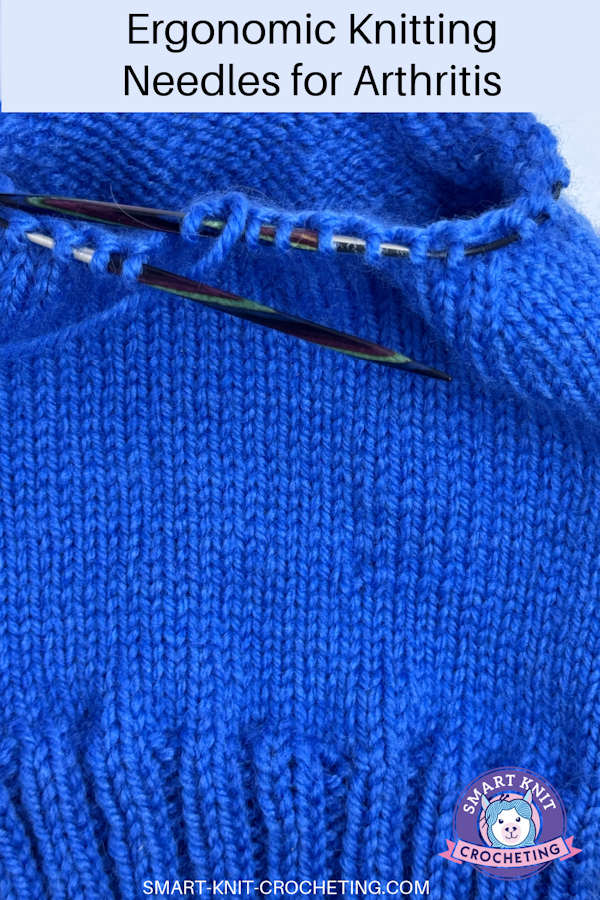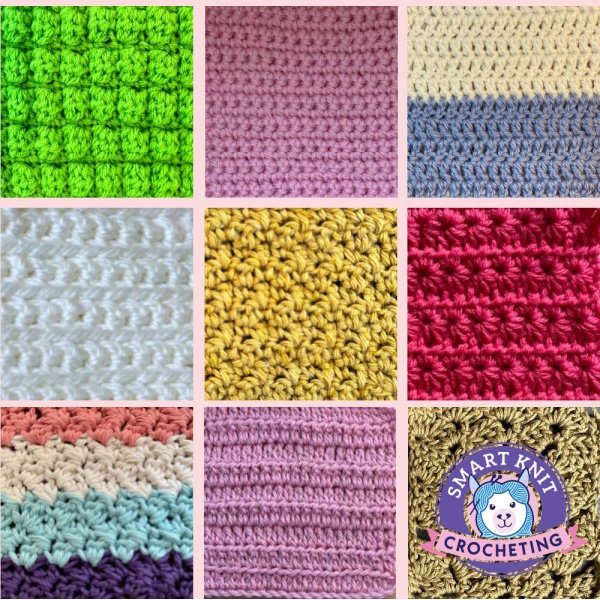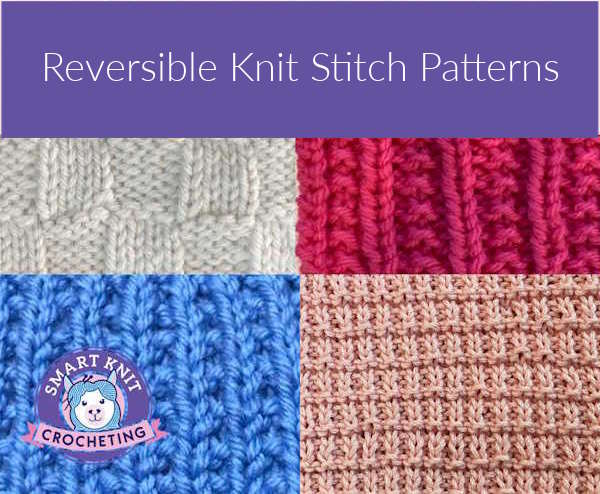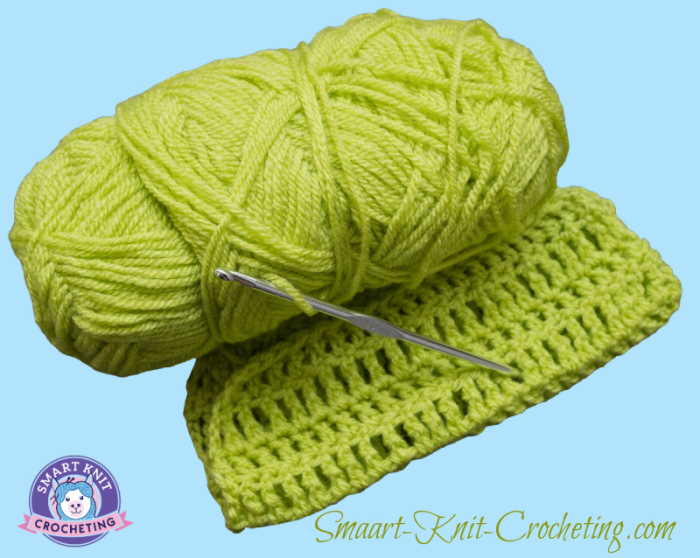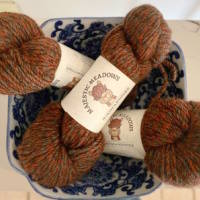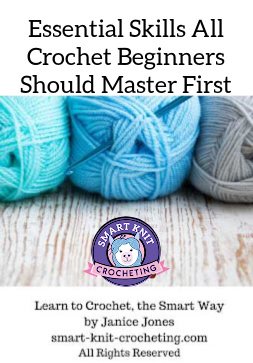- Home
- Must Have Supplies
- Ergonomic Knitting Needles for Arthritis
10 Ergonomic Knitting Needles for Arthritis [2025 Guide]
by Janice Jones, Certified Knitting Instructor, November 2025
Knitting has always been one of my greatest joys, but living with arthritis, rheumatoid arthritis, and a mild case of carpal tunnel syndrome has made it increasingly difficult to enjoy this craft the way I used to. Some days, my fingers ache before I finish the first few rows. Other times, the strength in my hands weakens, making it hard to grip my needles or maintain steady tension on my yarn. I found myself spending more time picking up dropped needles than knitting itself.
It’s incredibly frustrating to love something so much yet feel held back by pain and physical limitations.
Because of this, I’ve spent a lot of time searching for tools that can help me keep knitting without the discomfort. The right needles can make an enormous difference — reducing strain, improving grip, and allowing me to knit longer and more comfortably. That’s why I started testing a variety of ergonomic knitting needles, especially ones designed to help those of us with arthritis or hand fatigue.
 Ergonomic Knitting Needles for Arthritis
Ergonomic Knitting Needles for Arthritis💬 Just a quick note: I’m not a medical professional — I’m simply sharing what’s helped me manage my own arthritis and hand pain while knitting. If you’re dealing with chronic pain or mobility issues, it’s always a good idea to check with your doctor or specialist before trying new tools or techniques.
Disclosure: This article contains affiliate links. If you purchase through them, I may receive a small commission at no extra cost to you. As an Amazon Associate, I earn from qualifying purchases. Thank you for supporting Smart Knit Crocheting!
In this article, I’m sharing the 10 best ergonomic knitting needles for arthritis, including the ones I personally tested. In my experience, most ergonomic knitting needles were either circular or DPNs.
Whether you struggle with pain, stiffness, hand weakness, or difficulty tensioning your yarn, I hope these reviews help you find needles that truly compensate for these challenges — so you can continue enjoying the craft you love without the pain that often comes with it.
What Makes a Knitting Needle Ergonomic?
If you’ve ever struggled to hold onto your needles, felt pain after just a few rows, or found yourself clenching more than knitting, you’re not alone — and you’re not imagining it.
And, I’m not talking about the way you gripped the needles when you first started to knit. The design of your knitting needles plays a massive role in your comfort, especially if you have arthritis, joint pain, or hand fatigue.
But what does “ergonomic” actually mean when it comes to knitting needles?
At its core, an ergonomic knitting needle is designed to reduce physical strain and improve hand comfort, especially during longer knitting sessions. These needles help compensate for issues like reduced grip strength, inflammation, stiffness, or pain in the fingers and wrists.
Here are the key features that make a knitting needle ergonomic:
1. Shape That Fits the Hand Naturally
Many ergonomic needles have triangular, square, or slightly rounded shapes rather than being perfectly round. These flat or angled sides provide resting points for your fingers, reducing the need to squeeze tightly, which is a significant cause of fatigue and pain in arthritic hands.
Examples:
Triangular needles (like Prym) encourage a lighter grip.
Square or 4-sided needles give better control with less effort.
2. Lightweight Materials
Weight matters — a lot. The heavier the needle, the more work your hand muscles need to do to lift and move it. I remember a time when 14-inch steel needles were used when making sweaters. They were extremely cold and heavy.
Ergonomic needles are often made of bamboo, plastic, wood, or aluminum, all of which are lighter than traditional stainless steel. Lightweight materials help reduce strain over time, especially when working on large projects.
3. Comfortable Grips or Texture
Some ergonomic needles feature rubberized, matte, or slightly textured finishes that help you maintain control without gripping too hard. Some of the plastic needles fall into this category. Others incorporate soft grip sections or slightly flexible shafts that move more naturally with your hands. These subtle features are beneficial if your fingers swell or feel stiff while knitting.
4. Smooth Yarn Glide (But Not Too Slippery)
The surface of the needle should allow yarn to glide easily — but not so slick that you lose control. A good ergonomic needle strikes that balance, giving just enough grip to manage tension without increasing hand strain. This is particularly important for knitters with reduced dexterity or grip instability.
5. Flexible Cords (for Circular Needles)
If you use circular needles, check for soft, memory-free cords that don’t curl or fight you while knitting. Most modern cords fit this description. A stiff or springy cord can make knitting more difficult, especially if you're struggling with control or tension.
Low-cost or off-brand cords can be stiff and difficult to use. Sadly, the more costly a cord is, the softer and easier it is to use. Ergonomic circular needles often come with swivel cords or cables designed for fluid, joint-friendly movement. Just be careful that you choose a circular needle that can be tightened securely onto the cable.
6. Quiet and Low-Vibration
While this may seem minor, sound and vibration feedback can add to sensory strain for some. Ergonomic materials like bamboo or plastic tend to be quieter and lower in vibration than metal, making the entire knitting experience more relaxing — and easier on sensitive joints or nerves. So, if that constant clicking of needles is disturbing to you, choose bamboo, wood, or plastic.
7. Length of Needle on Circular Needles
This usually isn't a problem with straight needles, but circular needles may be if the cable-attached needle is too short to fit comfortably in your hand. When you need a 16" circular needle, the actual needle tips may be shorter to accommodate the 16-inch needle. A one-, two-, or three-inch needle tip may be extremely uncomfortable in your hand, especially if you are accustomed to a longer needle.
Before purchasing circular needles, ensure that you can work on the needle tips. Very short needles can cause strain on your hands.
 I am in awe of anyone who can knit with these little circular needles. Sadly, it isn't me.
I am in awe of anyone who can knit with these little circular needles. Sadly, it isn't me.Material Comparison Table: Composition of Your Needles: Bamboo, Wood, Aluminum, Steel
| Material | Weight | Texture | Best For | Ergonomic Rating |
|---|---|---|---|---|
| Bamboo | Very light | Slightly grippy | Beginners, sensitive hands | ⭐⭐⭐⭐☆ |
| Wood | Light | Warm & natural | Arthritic hands, gentle knitters | ⭐⭐⭐⭐⭐ |
| Aluminum | Light | Very smooth | Fast knitters, slick yarns | ⭐⭐⭐☆☆ |
| Stainless Steel | Medium | Cold & slick | Precision knitting | ⭐⭐☆☆☆ |
| Plastic (Prym) | Lightest | Matte texture | All-day comfort, beginners | ⭐⭐⭐⭐☆ |
1. Prym Ergonomic Double Pointed Needles
- Type: Double-pointed
- Material: High-performance plastic
- Size Tested: US 6 (4.0 mm)
- Best For: Sock and Mitten knitters, fans of double-pointed needles
My Experience
These Prym needles have a uniquely triangular shape that transitions into a round tip. This gives you more control and reduces slipping, especially if your grip is weaker due to arthritis. They’re very lightweight, which helps avoid fatigue during long sessions. I found the tips smooth but not too sharp — ideal for tight stitch patterns.
Pros
✓ Super lightweight and comfortable to hold
✓ Triangular shaft eases grip tension
✓ Quiet — no clicking or metallic sounds
✓ Affordable
Cons
✗ Some yarns (exceptionally super fine) don’t glide as well on plastic
✗ May feel too flexible for tight knitters
Where to Buy: Amazon
2. Addi Knitting Needles (Addi Rocket 2 Squared Ergonomic 32-inch)
 Addi Knitting Needles (Addi Rocket 2 Squared Ergonomic 32-inch)
Addi Knitting Needles (Addi Rocket 2 Squared Ergonomic 32-inch)Best Known For: Smooth glide, flexible cord connections, and lightweight tips.
Why They’re Ergonomic:
Addi offers several lines that support ergonomic needs. Their AddiClick interchangeable circulars use memory-free cables and rotating joins that help prevent wrist twisting. The Addi Comfort Grip needles (especially the crochet hooks) feature a rubberized handle that cushions the fingers. Addi tips are also slightly blunted, which helps avoid jabbing or over-extension of the fingers.
Ideal For:
Knitters who want speed without pain, especially those knitting lace or fine yarns, where smooth movement is key.
✓ Smooth glide ideal for fast knitters
✓ Flexible, memory-free cables reduce wrist strain
✓ Great build quality and long-lasting
✓ AddiComfort crochet hooks offer ergonomic grips
✓ Interchangeable sets available
✗ On the pricey side
✗ Tips may be too slick for beginners
✗ Not as grippy as wood/bamboo for sore hands
3. KnitPro Cubics
 KnitPro Cubics
KnitPro CubicsBest Known For: Square-shaped knitting needles made of wood or metal.
Why They’re Ergonomic:
Cubics are square, providing natural flat areas for your fingers to rest. This encourages a lighter touch and more control, especially useful if you tend to grip tightly due to tension or pain. The square shape also makes it easier to maintain even stitch tension without straining your hands. They come in both wood (warmer and grippier) and metal (slicker and lighter) versions.
Ideal For:
Knitters with arthritis or carpal tunnel who want better grip control and reduced pressure on joints.
✓ Square shape promotes relaxed grip
✓ Helps maintain even tension
✓ Available in wood or metal
✓ Good range of sizes and styles
✓ Comfortable for arthritic hands
✗ A square shape may feel odd at first
✗ Join quality can vary between sets
✗ Some finish types are not as durable
4. Lykke Driftwood Knitting Needles
 Lykke Driftwood Knitting Needles
Lykke Driftwood Knitting NeedlesBest Known For: Smooth, warm-to-touch wooden tips with a luxury feel.
Why They’re Ergonomic:
Lykke needles are made from birch wood with a smooth laminate finish, giving them a soft texture that’s gentle on sore hands. Their lightweight and warm feel makes them easier to hold for long sessions. The surface has just the right amount of drag to help manage slippery yarns — reducing the need for a tight grip.
Ideal For:
Knitters who want a natural-feeling, warm, and quiet needle for long sessions with reduced strain.
✓ Warm, natural feel—gentle on joints
✓ Beautiful craftsmanship
✓ Lightweight and quiet
✓ Good balance of grip and glide
✓ Comes in elegant interchangeable sets
✗ Tips aren’t as sharp as metal options
✗ Wood may wear down over time
✗ Some users find cord joins stiff
5. ChiaoGoo Bamboo & Stainless Steel Needles
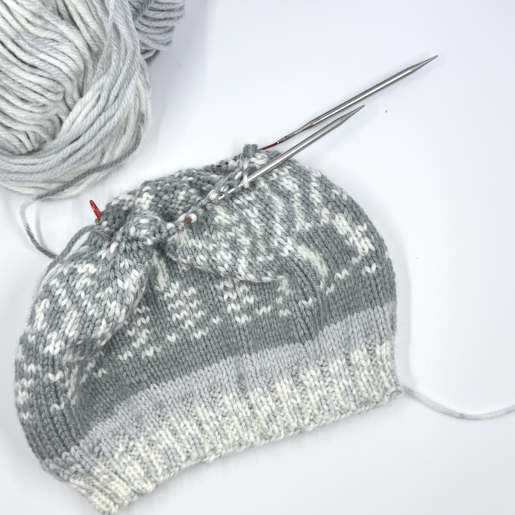 ChiaoGoo Bamboo & Stainless Steel Needles
ChiaoGoo Bamboo & Stainless Steel NeedlesBest Known For: High-quality bamboo and steel tips with memory-free cables.
Why They’re Ergonomic:
Their bamboo circulars are especially arthritis-friendly due to their light weight and slightly textured finish. Meanwhile, their stainless steel options (Red Lace line) are ultra-smooth and pair with flexible, non-kinking cables that prevent wrist strain when knitting in the round. ChiaoGoo’s cable join is seamless, which reduces hand tension by avoiding snags.
Ideal For:
Knitters who need flexible circulars or want options in both bamboo and steel — without sacrificing comfort.
✓ Memory-free cords—no coiling or fighting
✓ Bamboo options are great for sensitive hands
✓ Smooth joins and durable construction
✓ Ideal for circular and magic loop knitting
✓ Excellent for advanced techniques
✗ Stainless steel tips may feel cold
✗ Lace tips are quite sharp—not ideal for all hands
✗ Slightly higher price than basic options
6. HiyaHiya Knitting Needles
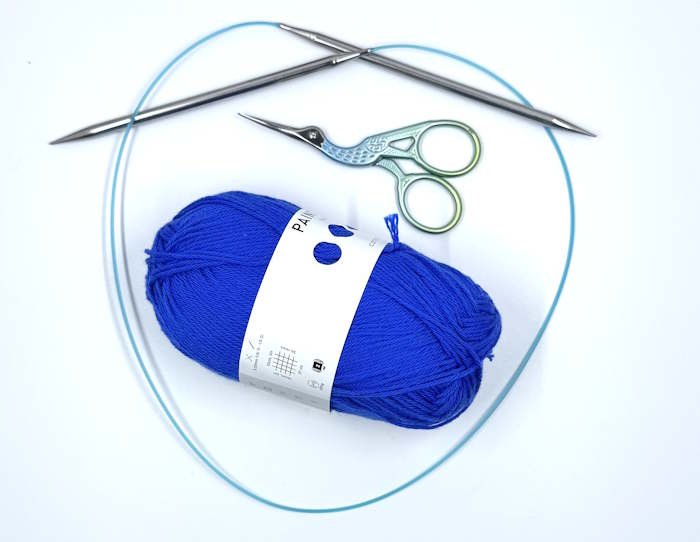 HiyaHiya Knitting Needles
HiyaHiya Knitting NeedlesBest Known For: Lightweight, smooth needles with comfortable cords and join transitions.
Why They’re Ergonomic:
HiyaHiya needles are incredibly lightweight and fast, yet they maintain smooth, rounded tips that are gentler on the hands than sharper brands. The cables on their circulars are flexible and well-joined, so there’s no tugging or resistance. Their bamboo line is especially arthritis-friendly, offering the warmth and grip sensitive fingers need.
Ideal For:
Knitters who want a balance of speed and softness, especially in an interchangeable system.
Pros:
✓ Extremely lightweight
✓ Smooth join system
✓ Available in stainless steel and bamboo
✓ Affordable interchangeable sets
✓ Flexible cords for ergonomic movement
Cons:
✗ Some knitters find metal tips too slick
✗ Cord connections may loosen over time
✗ Not as widely available in local shops
7. Clover Takumi Bamboo Knitting Needles
 Clover Takumi Bamboo Knitting Needles
Clover Takumi Bamboo Knitting NeedlesBest Known For: Traditional bamboo needles with a soft, grippy texture.
Why They’re Ergonomic:
Clover's bamboo is very lightweight and naturally warm, which helps reduce joint stiffness. The surface provides just enough friction to hold stitches in place, meaning your fingers don’t have to work as hard. They're ideal for slow, mindful knitting where every motion is deliberate and easy on the joints.
Ideal For:
Beginners, arthritic knitters, and anyone who benefits from slower, more controlled motion.
Pros:
✓ Very lightweight and warm to the touch
✓ Ideal for beginners and arthritic hands
✓ Slightly grippy texture helps control yarn
✓ Quiet—perfect for stress-free knitting
✓ Widely available and affordable
Cons:
✗ Tips can dull over time
✗ Not ideal for very fast or tight knitting
✗ Limited to classic shapes—no square or triangle options
8. Denise Interchangeable Needles
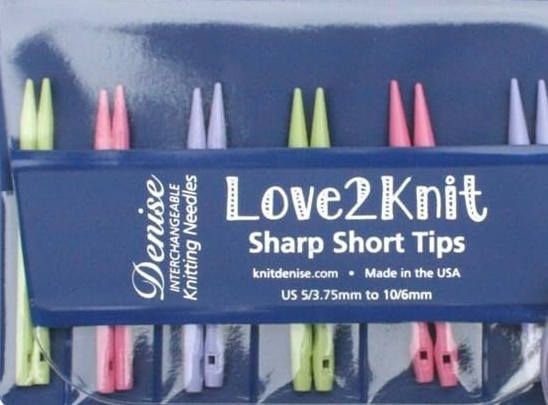 Denise Interchangeable Needles
Denise Interchangeable NeedlesBest Known For: Budget-friendly plastic needles with lots of size options.
Why They’re Ergonomic:
Made from resin-based plastic, these needles are incredibly light and have a matte texture that’s easy to hold without clenching. Their cables are soft and flexible, and the join system is intuitive and quick. Denise sets come with many sizes, making them ideal for knitters who want variety without hand strain.
Ideal For:
Budget-conscious knitters who want lightweight, gentle needles in many sizes.
Pros:
✓ Soft, warm plastic material is gentle on joints
✓ Modular system with lots of sizes included
✓ Cords are flexible and lightweight
✓ Great budget-friendly ergonomic option
✓ Ideal for beginners and occasional knitters
Cons:
✗ Not as smooth or slick as metal options
✗ Plastic tips may wear or warp over time
✗ Cord joins aren’t seamless
9. Tulip Knina Knitting Needles (and Etimo for Crochet)
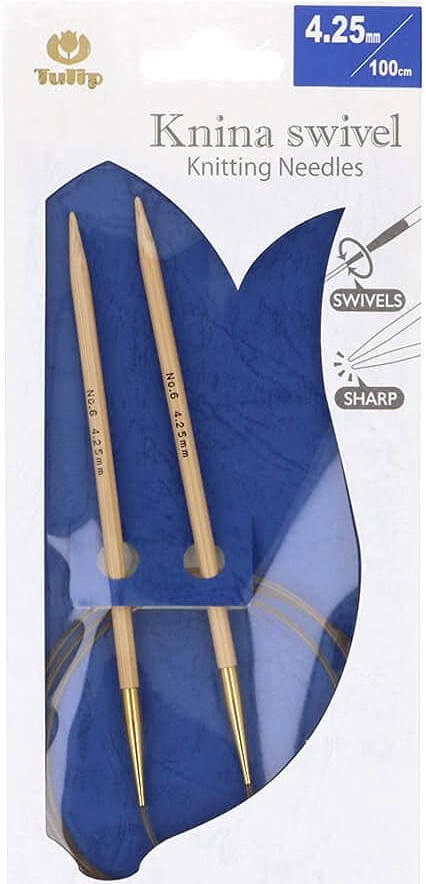 Tulip Knina Knitting Needles
Tulip Knina Knitting NeedlesBest Known For: Japanese-made bamboo needles and crochet hooks with soft-touch handles.
Why They’re Ergonomic:
Tulip's Knina line features smooth bamboo tips and quiet cables, with a focus on comfort and control. Their Etimo crochet hooks are beloved for their soft grip handles, and some knitting needle models incorporate similar features. They're crafted for minimal hand movement, making them ideal for sore, arthritic joints.
Ideal For:
Knitters who want a silent, soothing experience with top-quality Japanese craftsmanship.
Pros:
✓ Smooth bamboo tips with polished finish
✓ Excellent cord flexibility and join quality
✓ Silent and warm—soothing to use
✓ Reliable Japanese craftsmanship
✓ Knina needles are explicitly designed for comfort
Cons:
✗ Limited availability outside specialty shops
✗ Not widely marketed, so harder to find reviews
✗ Pricier than other bamboo options
Check the price for Tulip on Amazon
10. Kollage Square (Double Pointed Needles)
 Kollage Square (Double Pointed Needles)
Kollage Square (Double Pointed Needles)Kollage’s Square DPNs are specifically designed to reduce hand fatigue and improve stitch consistency. Made from lightweight anodized aluminum, these double-pointed needles feature a square shape that gives your fingers natural grip points, making them ideal for knitters with arthritis, carpal tunnel, or reduced hand strength.
The slightly grippy texture helps prevent dropped stitches—especially useful when working with small, slippery yarns like sock or lace weight.
Kollage needles were initially developed with medical input to reduce strain in the hands and wrists, making them an accurate, ergonomic-first tool. They’re especially popular among sock knitters, but work beautifully for mitts, hats, and other small rounds.
Pros:
✓ Square shape promotes relaxed grip and better tension control
✓ Lightweight aluminum reduces fatigue over long sessions
✓ Less likely to roll away when set down (due to shape!)
✓ Made in North America; high quality and eco-conscious
✓ Smooth surface with enough grip to hold stitches in place
Cons:
✗ It may take time to adjust to the square shape if you’ve only used round needles
✗ Pricier than mass-market DPNs
✗ Limited availability in some local shops
Check Price for Kollage on Amazon
What If You’re Still in Pain?
Even with the best ergonomic knitting needles, some knitters still experience discomfort, stiffness, or pain — especially those living with rheumatoid arthritis, osteoarthritis, carpal tunnel syndrome, or other chronic hand conditions. If that’s you, please know: you’re not alone, and you haven’t failed. Knitting through pain isn’t about pushing through — it’s about adapting wisely.
Sometimes, ergonomic tools help reduce pain, but they might not eliminate it entirely. That’s okay. What matters is finding a system — tools, posture, rhythm — that lets you continue enjoying knitting without causing harm.
Here are a few things you can try if pain continues:
Tips for Pain-Free Knitting
Even with the best ergonomic tools, chronic hand pain or arthritis can still get in the way of your creative joy. But several simple, practical strategies can help you knit longer, more comfortably — without pushing your hands too far.
Here are some tried-and-true tips to support pain-free (or pain-reduced) knitting:
1. Wear Compression Gloves While Knitting
Compression gloves like Thermoskin, IMAK, or Copper Fit help:
- Support joints
- Improve blood flow
- Reduce swelling
- Keep hands warm (very important for joint mobility)
Choose fingerless gloves that are breathable, snug but not tight.
Check out these Compression Gloves on Amazon
2. Optimize Your Knitting Posture
Poor posture increases tension in the wrists, shoulders, and neck. Try this:
- Sit with both feet flat on the floor
- Keep shoulders relaxed and elbows supported
- Use a pillow or armrest to rest your forearms
- Sit in a chair with back support (avoid slouching or leaning forward)
3. Follow the “20-20-20” Rule
Knitters often lose track of time and overdo it. This method helps:
- Every 20 minutes, pause for 20 seconds
- Stretch, move your hands, or gently shake them out
- Every hour, take a 5-10-minute break from knitting entirely
Set a timer if needed — your joints will thank you. If you knit while watching TV, stop at the end of the show and relax.
4. Do Simple Hand & Wrist Exercises
Gentle exercises help maintain mobility and reduce stiffness. Try:
- Wrist rolls (rotate wrists slowly in circles)
- Finger stretches (spread fingers wide, then make a soft fist)
- Thumb touches (touch thumb to each fingertip, slowly)
- “Prayer stretch” (press palms together and lower hands gently)
Just 3–5 minutes a day can make a difference.
5. Use the Right Yarn and Projects
Believe it or not, the yarn you use can affect your pain levels. I offer many of my favorite yarns throughout this website, but just because they work for me doesn't mean they will be perfect for you.
- Avoid stiff, scratchy yarns that require more effort
- Try chunky or bulky yarn for faster, looser stitches
- If bulky yarn is too much to handle, consider worsted-weight or dk-weight
- Use larger needles and patterns that don’t require tight tension
Even switching to a looser gauge can significantly reduce joint strain.
6. Switch Up Tools Regularly
You don’t have to stick with one type of needle all day. What worked perfectly when you were young may not be ideal later on.
- Alternate between straight, circular, and DPNs
- Rotate materials (wood, plastic, metal) based on how your hands feel
- Keep multiple projects going — some easier on the hands than others
7. Listen to Your Hands
Above all, don’t ignore pain. If you feel:
- Tingling or numbness
- Sharp pain or swelling
- Loss of grip strength
… take a break. Rest days are part of sustainable crafting. Pushing through pain can make things worse — and may even turn a minor flare-up into a longer-term setback.
Frequently Asked Questions About Ergonomic Knitting Needles for Arthritis
Do ergonomic knitting needles really help with arthritis or hand pain?
Do ergonomic knitting needles really help with arthritis or hand pain?
Yes — they absolutely can. While they won’t cure arthritis or eliminate chronic hand pain, ergonomic knitting needles are specifically designed to reduce strain, fatigue, and tension in your hands, wrists, and fingers. Features such as triangular or square shapes, lightweight materials, and soft grips help you knit more comfortably with less effort.
In my personal experience (with both rheumatoid arthritis and mild carpal tunnel), switching to ergonomic needles has helped me knit longer with fewer flare-ups. They’re not magic — but they’re a game-changer for anyone struggling to enjoy knitting without discomfort.
Which knitting needle shape is best for arthritic hands?
Which knitting needle shape is best for arthritic hands?
Shapes that provide flat surfaces for your fingers to rest on — such as triangular (like Prym) or square (like Knitter’s Pride Cubics) — are among the best options for arthritic or weakened hands. These shapes allow you to hold the needle more loosely, reducing the need to clench or maintain constant grip pressure.
Round needles can work too, especially in lightweight bamboo or plastic, but ergonomic shapes tend to be more joint-friendly.
Are bamboo or wood knitting needles better than metal for arthritis?
Are bamboo or wood knitting needles better than metal for arthritis?
In many cases, yes — bamboo and wood are lighter, warmer, and have a slightly grippy texture, which reduces slippage and strain. They feel more natural in the hand and don’t conduct cold, which can aggravate joint stiffness.
That said, some knitters with arthritis prefer light aluminum needles (like HiyaHiya or Addi) for speed and smoothness. It’s all about what feels best for your hands. I use a mix — softer materials when my hands are sore, and smoother metals when I want to knit faster with less resistance.
What size knitting needles are easiest on arthritic hands?
What size knitting needles are easiest on arthritic hands?
Larger needles (typically US size 7–10 / 4.5–6mm or higher) are often easier to manage because:
- They require less finger dexterity
- Stitches are larger and looser
- Projects move faster, reducing time under tension
Tiny needles and tight stitches (like socks on US size 1–2) can cause more strain. If you love small-gauge projects, try ergonomic double-pointed or circular needles to distribute the weight and reduce hand fatigue.
What can I do if knitting still causes pain, even with ergonomic needles?
What can I do if knitting still causes pain, even with ergonomic needles?
First, know that you’re not alone — I’ve been there too. Ergonomic needles help, but sometimes they’re not enough. Here’s what else you can try:
- Wear arthritis-friendly compression gloves while knitting
- Follow the 20-20-20 rule (take breaks every 20 minutes)
- Use chunkier yarns or larger needle sizes to reduce strain
- Try gentle hand exercises and stretches (like wrist rolls and finger spreads)
- Knit in short sessions with lots of rest in between
- Alternate between different needle types and materials
- Focus on posture — support your elbows and keep your hands relaxed
If pain persists, consider speaking to an occupational therapist or hand specialist who understands repetitive strain in crafts like knitting.
Are circular knitting needles better for arthritis than straight needles?
Are circular knitting needles better for arthritis than straight needles?
Sometimes, yes. Circular needles are especially helpful for:
- Reducing the weight of your project (the cable holds most of it)
- Preventing wrist strain by allowing your hands to stay closer together
- Offering softer, more flexible movements than straight needles
- Preventing you from dropping your needles due to hand fatique
I personally find that circulars with soft, swivel cables (like ChiaoGoo or Addi) are much easier on my joints than rigid straights — especially when knitting for long periods.
How do I know which ergonomic needle is right for me?
How do I know which ergonomic needle is right for me?
The best way to know is to test a few different options — because what works for one knitter might not work for another. Factors to experiment with:
- Shape: Round, square, triangular
- Material: Bamboo, wood, plastic, metal
- Type: Straight, circular, interchangeable, DPN
- Size: Medium to large sizes are best for comfort
Start with one or two highly rated ergonomic brands (like Prym, Clover, or Cubics) and knit a few rows to see how your hands respond. Keep notes — and don’t be afraid to mix and match based on how your hands feel that day.
Ergonomic Knitting Needles for Arthritis: Pin Now
Final Thoughts: Keep Knitting, Comfortably
Living with arthritis, rheumatoid arthritis, or carpal tunnel doesn’t mean you have to give up the craft you love. It just means you need to be more intentional about the tools you use — and thankfully, there are ergonomic knitting needles that genuinely make a difference.
Through my own journey of testing different shapes, materials, and brands, I’ve learned that the right needle can relieve tension, reduce pain, and extend the amount of time I can comfortably knit. Whether it’s the soft warmth of bamboo, the forgiving shape of square needles, or the lightweight design of Prym’s ergonomic line, there’s a tool out there that fits your hands, your projects, and your comfort level.
Remember, no two hands are the same. What works for me might not work for you — and that’s okay. Be patient with yourself. Test a few styles. Listen to your hands. Rest when you need to. And most of all, don’t give up. You deserve to keep knitting with ease, joy, and confidence.
My rheumatologist always tells me to keep knitting and crocheting. Why? Because the more I exercise those joints, the healthier they will be.
I hope this guide has helped you take one step closer to pain-free, peaceful knitting. If you’ve found an ergonomic needle that changed everything for you — or if you still have questions — I’d love to hear from you in the comments below.
Happy knitting — gently and joyfully. 💙
Disclaimer
The information in this article is based on personal experience and research and is not intended to substitute for professional medical advice, diagnosis, or treatment. Always consult with your doctor, rheumatologist, or healthcare provider before making changes to how you manage your arthritis, carpal tunnel, or other medical conditions.
